Issaki Hoh-Toh Matsuri Festival
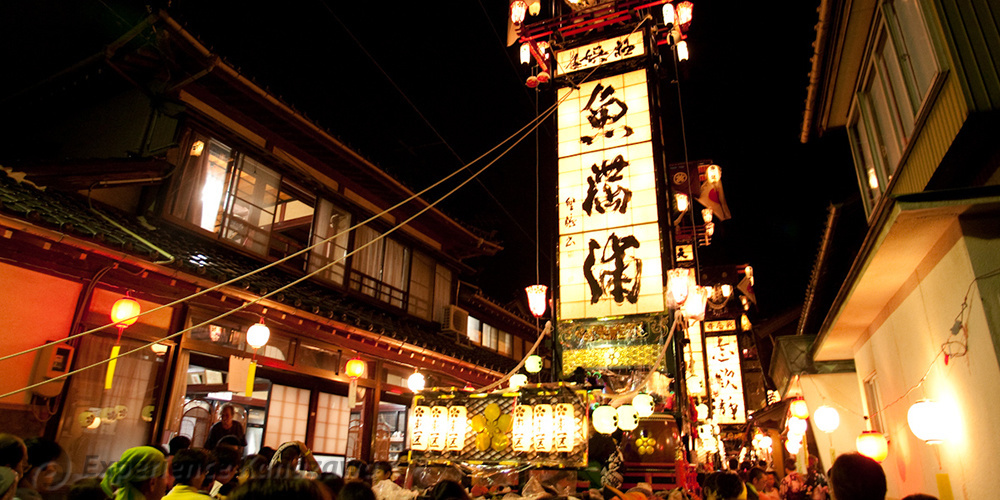
100 people drag one of the tallest Kiriko lantern floats!
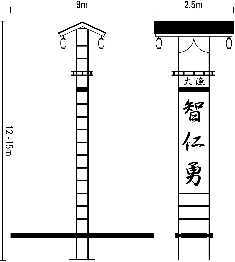
The Issaki Hoh-toh-Matsuri is well-know for having the tallest Kiriko in the Noto Peninsula. They have 6-7 Kiriko which are 12-15 meters in height and weight about two tons each. Issaki is somewhat of a slang word for the district name, Ishizaki. So if you go there to see the festival, you should use "Issaki" instead of the official name, you'll sound like a pro!
Coco SHIZUO, Artex Inc.; Updated June 1, 2018
Issaki Hoh-Toh Matsuri Festival

100 people drag one of the tallest Kiriko lantern floats!

The Kiriko is a uniquely designed lantern float found in the Noto Peninsula. The Abare Matsuri festival in Noto Town, Nafune Taisai in Wajima City, and Iida Toroyama Matsuri in Suzu City also have tall lanterns which are similar in style. Although it's not well-recorded in history, it seems that the first Kiriko lantern was small enough for one person to carry. Then, people started to compete with others in the different districts for the size! Fishermen are quite religious because their occupation can be fatal. They spend money and provide offerings for the God of the ocean and to show their enthusiasm.
The Issaki Hoh-toh-Matsuri is well-know for having the tallest Kiriko in the Noto Peninsula. They have 6-7 Kiriko which are 12-15 meters in height and weight about two tons each. Issaki is somewhat of a slang word for the district name, Ishizaki. So if you go there to see the festival, you should use "Issaki" instead of the official name, you'll sound like a pro!
Coco SHIZUO, Artex Inc.; Updated June 1, 2018
Place: Doh-no-mae Hiroba plaza, Ishizaki district, Nanao City
Date: The first Saturday of August
How to get to Ishizaki District: Take a JR "Nanao Line" train, get off at "Wakura-Onsen Station"! Check the timetable!
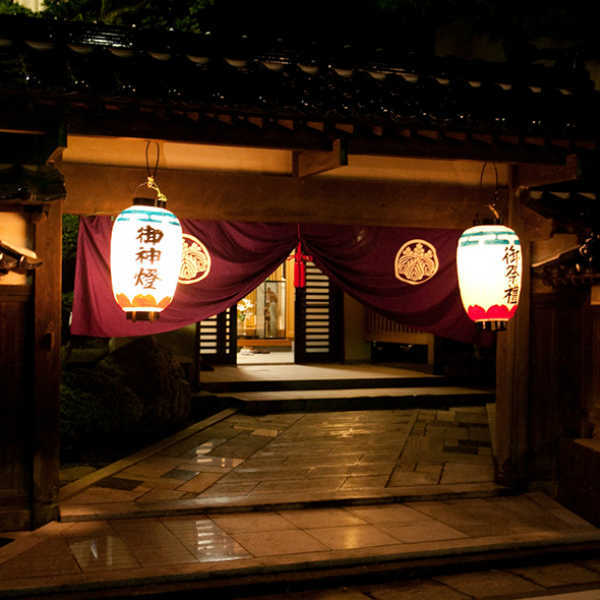
The three Kanji characters mean, "a bay full of fishes", "wisdom, affection and braveness", etc...
When you first see the float, the odd design will make you wonder...why is the balance so poor?
This festival was originally a Noh-ryo-Sai (festival to enjoy the cool breeze of the evening) at Ishizaki Hachiman-Jinja shrine, but there were no Kiriko floats at that time. It's said that after several great fires, a fishing net maker introduced the huge lanterns from the northern area of Noto in 1889. In other words, the festival is not so old. Also, most of the Kiriko festivals in the peninsula are descended from the Gion Matsuri festival in Kyoto. The Issaki Hoh-Toh Matsuri was no exception. It was held on the 15th of June until 1995, so that is a very important day for the Gion-Sha shrine.
Just so you know, Issaki's lanterns have Kanji (Chinese characters) on the front and pictures of warriors on the back. Nobody really knows why people choose the three Kanji used for each lantern, some have the meaning, "a bay full of fishes", others say, "wisdom, affection and braveness". Sound very fisherman-like, huh? Anyway, the Issaki district's Kiriko design uses what we call "Nobori-Bata-Type", which looks like a streamer. No wonder it's so unbalanced! Most of the Nobori-Bata-Type Kirikos are just 4-5 meters in height.
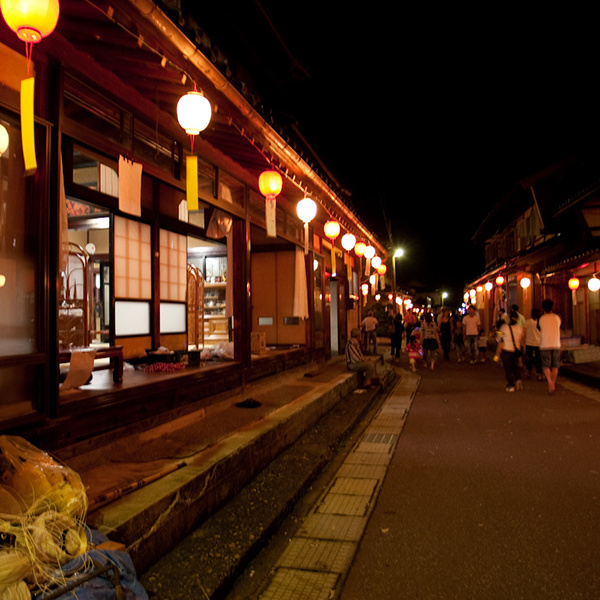
Other districts in the peninsula are proud of the number of Kiriko they used, but they also put a lot of pride on the size of the floats. The Issaki district is completely opposite!
It's lovely they decorate their houses with small lanterns and Noren curtains, which have their family crests dyed!
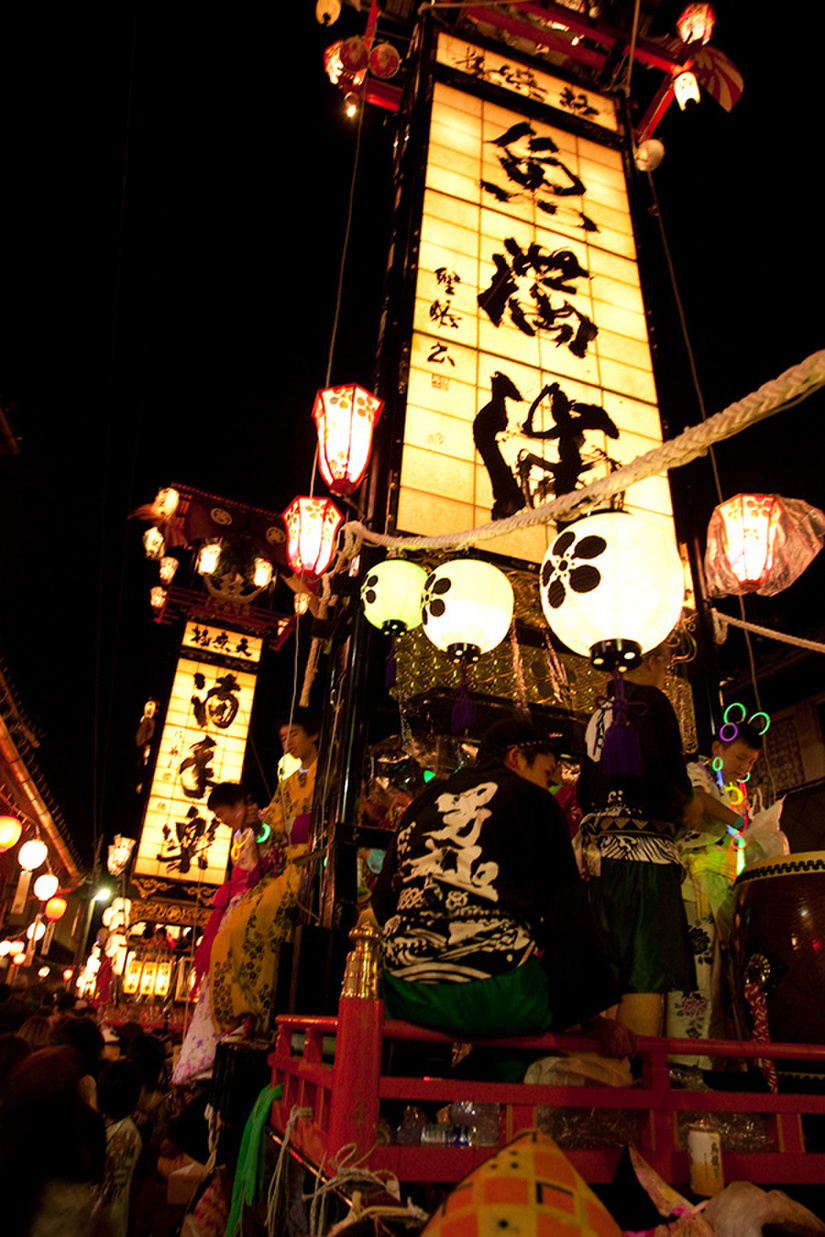
The Ishizaki-Machi district is conveniently located just a five minute walk from Wakura-Onsen Station. It's actually one of three biggest festivals in Nanao City, so people from all over Japan visit the spa town to see the festival. Although not all of them are fishermen these days, you can still see 100 people dragging a tall lantern float on the narrow street. Just imagine, the floats nearly scrape against buildings as they move between the houses...
The houses are designed so that the doors are opened toward the streets. On a festival day, you will see many people coming in and out of houses, drinking Sake on Tatami mats, and cheering the people dragging the huge lanterns. It's as if everyone in the district is family. They decorate their houses with small lanterns and Noren curtains with their family crests embroidered. Lovely, isn't it? You'll wish that you were one of the residents on the day of the festival.

They all slightly jump and shout "Sorei!" when starting to walk. "Sakka-sai! Saka-sassai! Isasaka-sah!"
Six or seven Kiriko start to move to the Doh-no-mae Hiroba plaza, showing you a performance before and after sunset. The Daytime performance under the blue sky is powerful, and the nighttime performance is like a fantasy with all of the lantern lights visable.
It seems like the Taiko drum and musical performers on the float are very important for those 100 people to walk in unison. They all slightly jump and shout "Sorei!" when starting to walk. "Sakka-sai! Saka-sassai! Isasaka-sah!" Then, jump again while shouting "Sorei!" They continue this 10-meter-walk and finally arrive in the plaza.
100 people carry a 2-ton float, so about 20 kilos per person? Teamwork is everything! If just one person starts to falter, they stop walking immediately. There are also beautiful musical performers standing on the floats, keeping balance. Beautiful indeed, these peninsula girls! Ah, wait a minute…look a bit closer and you'll realize that they aren't girls; they're just wearing a girl's summer Kimono! Interesting!
The night performance goes on until midnight. Even when the festival is finally over, the sounds of the exotic bell will still ring in your ears.
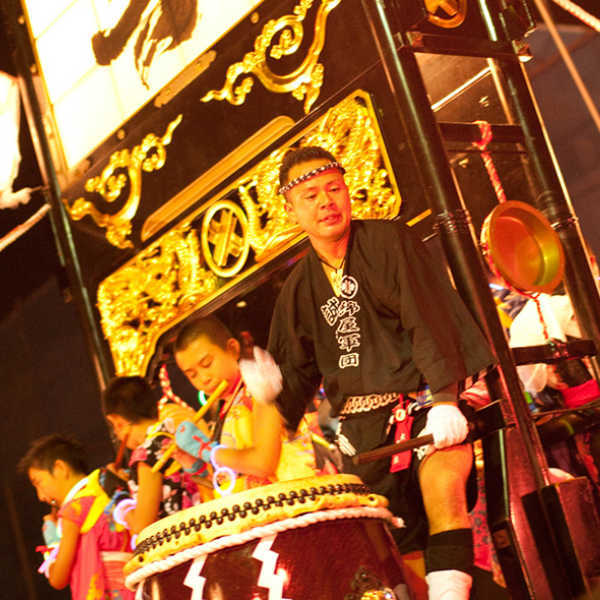
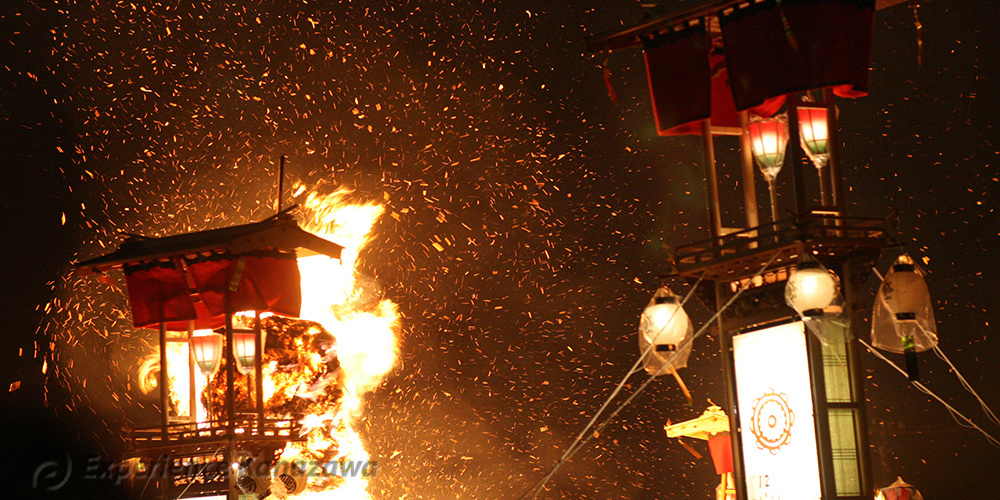
Kanazawa Area
Kenrokuenn Garden
Following Matsuo Bashô’s steps in Ishikawa - 1/6 [Introduction]
Following Matsuo Bashô’s steps in Ishikawa - 2/6 [Kanazawa]
Noto Area
Mitsukejima Island
Kaga Area
Following Matsuo Bashô’s steps in Ishikawa - 3/6 [Komatsu City]
Following Matsuo Bashô’s steps in Ishikawa - 4/6 [Natadera Temple]
Following Matsuo Bashô’s steps in Ishikawa - 5/6 [Yamanaka Onsen Town]
Following Matsuo Bashô’s steps in Ishikawa - 6/6 [Daishoji District]
Rosanjin in Yamashiro Onsen Town
Stroll Kanazawa in Rental Kimono - 1/2 [Kimono Rental]
Stroll Kanazawa in Rental Kimono - 2/2 [Kimono Stroll]
January
Enyukai: Geisha Party
February
Setsubun-Sai Festival
AUGUST
Issaki Hoh-Toh Matsuri
November
Enyukai: Geisha Party
